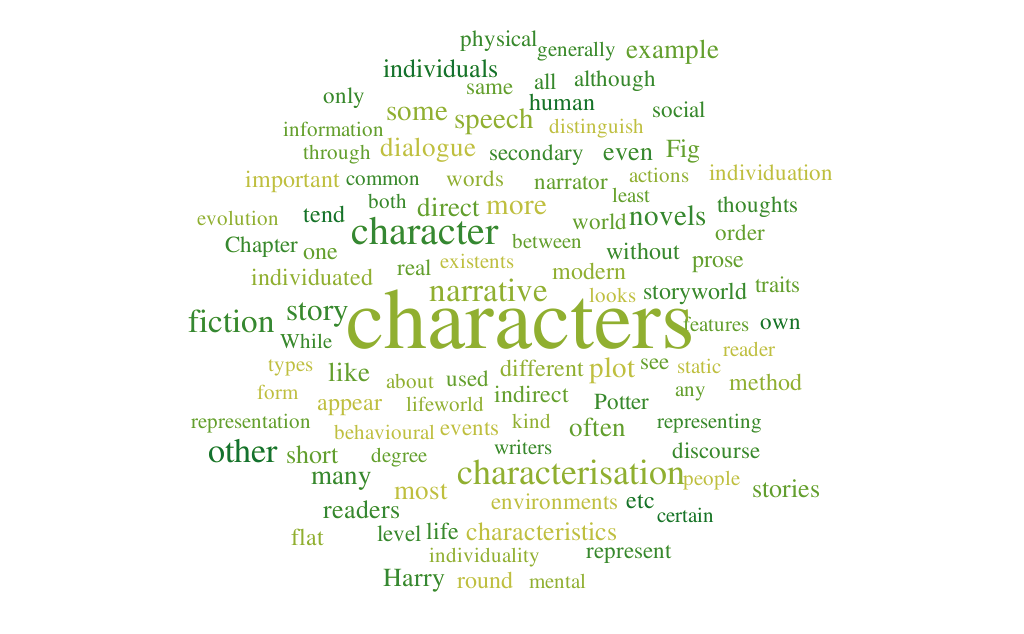
4. Characterisation
© Ignasi Ribó, CC BY 4.0 https://doi.org/10.11647/OBP.0187.04
The worlds of prose fiction are not only made of events arranged into plots and environments arranged into settings. In order to have a story, there must also be characters. The arrangement of characters in the story is called characterisation. But what are characters? Why are they so necessary for narrative? What kinds of characters do we find in fiction stories? How are they characterised and represented? These are some of the questions that will occupy us in this last chapter dedicated to the elements of story.
A character is any entity in the story that has agency, that is, who is able to act in the environments of the storyworld. Characters are most often individuals (e.g. Ivan Karamazov in The Brothers Karamazov, Werther in The Sorrows of Young Werther, or Henry Jekyll in Dr Jekyll and Mr Hyde), but there are some special cases where we find collective or choral characters (e.g. Thebans in Oedipus Rex, or the group of neighbourhood boys in The Virgin Suicides). Characters are most often human beings, but they can also be nonhuman animals or other entities who behave like humans (e.g. the White Rabbit in Alice in Wonderland — Figure 4.1 — or the robots in I, Robot). Only exceptionally are the characters of short stories and novels animals or other entities without human features (e.g. the white whale in Moby Dick, or the aliens in 2001: A Space Odyssey). In our discussion of character, therefore, we will assume that the characters of the story are human or human-like individuals, although there are notable exceptions to this rule.
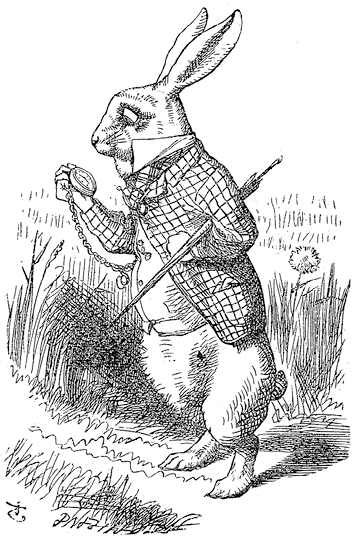
Fig. 4.1 Illustration of Lewis Carroll Alice in Wonderland (1865). By John Tenniel, Public Domain, https://en.wikipedia.org/wiki/Alice%27s_Adventures_in_Wonderland#/media/File:Alice_par_John_Tenniel_02.png
That characters are important for narrative fiction can be seen from the fact that the titles of many short stories and novels are taken from the proper names of their main characters (protagonists). These are sometimes called eponymous characters and are very frequent in the history of literature. Some of the most famous novels are named after their protagonists, such as Don Quixote, Robinson Crusoe, Jane Eyre, Madame Bovary, or Anna Karenina. Even when characters do not appear in the title, they are still the most relevant existents in a great majority of short stories and novels. This seems to be a consequence of the nature and function of narrative. As we saw in the introduction, narrative is fundamentally a way for us humans to give meaning to our own world. And what is more important for us than ourselves and other entities like us?
While recognising the relevance of characters in narrative, we should not forget the intimate connections between characters and the other two existents of the story, events and environments (see Fig. 3.1, in Chapter 3). Stories are not simply made of characters acting in an environment. All the existents of the story are equally indispensable to the recreation of a convincing storyworld, just as they are in our own lifeworld. Thus, characterisation, plot, and setting need to work together in order to effectively sustain narrative discourse and contribute to meaningful communication between authors and readers.
In this chapter, we will start by discussing how the nature of characters changes when we analyse them at the level of narrative, discourse, or story. We will then consider the notion of individuation in order to show that characterisation in prose fiction is generally aimed at constructing fully individuated characters, but very often also produces typical and universal characters. When analysing fictional characters in psychological/realistic terms, it is common to distinguish their degree of individuation (flat vs. round characters), as well as their degree of personal development throughout the plot (static vs. dynamic characters). After looking at these typologies of character, we will discuss the most common approaches to representing them in narrative: indirect and direct characterisation. An important method of direct characterisation is dialogue, which will be the topic of the last section in this chapter.
4.1 The Actants of Narrative
The nature of characters varies depending on what level of the semiotic model we position ourselves in (see Figs. 1.5 and 1.7 in Chapter 1). At the level of narrative, characters may be seen as figments of the author, who endows them with certain features or qualities drawn from his imagination or observations, which are then recreated by readers in every reading. At the level of discourse, however, we can see characters as a construct of the text, a sort of ‘paper people’ whose features are exclusively constituted by the descriptions found in the text and the inferences that can be made from textual cues.1 In this sense, characters are incomplete creatures, mere actants with no life beyond the text and no reason to exist other than to fulfil their function in the plot.2 Harry Potter, for example, might appear as an almost real individual for many readers, but at the level of discourse he is simply the hero of an adventure story whose ‘life’ does not extend beyond the events narrated in the eponymous novels.
Things look different when we analyse characters as existents of the story. At that level, characters may be seen as individuals who inhabit an alternative world, the storyworld. It is a matter of some debate whether the existence of characters in the alternative world of the story should be regarded as complete or limited to text-based inferences. Here, we will assume that characters are endowed with at least a potentially complete existence in the storyworld. Of course, this existence is ultimately dependent on the narrator of the story (a figure of discourse). But within the confines of the storyworld created by narrative discourse, characters are generally agents endowed with an identity, social and personal relationships, feelings, desires and thoughts, just like any of us in our own lifeworld. Thus, Harry Potter might not be, nor could ever be, a real person in the world of its readers. But, in the storyworld created by J. K. Rowling’s novels, he is a heroic and charismatic young wizard, with a multifaceted life, which includes the adventures narrated in the plots of the novels, but also, at least potentially, many other events, big and small, of which we may never hear.
As existents in the storyworld, all characters have in principle the same importance. In J. K. Rowling’s fictional world, to continue with the same example, Harry is not more important than Hermione Granger or Neville Longbottom. But narrative discourse, by arranging events, environments, and characters into a plot, necessarily establishes distinctions amongst the characters, just as it does amongst the events and environments. Thus, Harry Potter becomes much more relevant than all the other characters, taking on the role of the main character (the protagonist or hero) in the story, while the rest appear as secondary characters. Some of these secondary characters, like Hermione or Ron, have a very prominent role next to Harry, while many others, like Angelina Johnson or Bertha Jorkins, only appear fleetingly and play minor supporting roles in the plot. A few other characters from this storyworld, like Draco Malfoy or Dolores Umbridge, are cast as antagonists to Harry and his friends in the conflicts that drive the plot of the novels, even if, under a different arrangement of events and environments, they might have been cast in a different role.
4.2 Individuation
Whether characters are central to the story or only play a secondary role, their characterisation generally requires the narrator to directly or indirectly ascribe to them certain characteristics or properties that identify them as individuals. This is what we call individuation. In principle, a primary character will be more individuated than a secondary one. And we can expect the characters that are least relevant for the plot to be also the least individuated. But this rule has, in fact, notable exceptions. It is not uncommon to find secondary characters with characteristics so well defined that they become at least as individuated in the minds of the reader as the protagonist himself, if not more so. In Joseph Conrad’s Heart of Darkness, for example, the elusive ivory trader Kurtz is characterised with more detail and nuance than Marlow, the protagonist of the story.
In general, individuation involves three sets of defining characteristics or traits:3
- Physical: These are the features of the body, such as whether the character is tall or short, slim or fat, blue-eyed or brown-eyed, fair or dark, male or female, etc. Many physical characteristics are external and can be observed with the naked eye (e.g. the shape of the nose or a scar on the forehead), while others might be internal and thus difficult to perceive directly (e.g. diabetes or heartburn).
- Mental: These are the features of personality or psychology, such as whether the character is modest or arrogant, upbeat or depressive, cruel or kind, dreamy or practical, etc. These traits compose what is commonly understood as the character of a person. They might include traits that are perceptual (e.g. powers of observation), emotive (e.g. excitability), volitional (e.g. ambition), and cognitive (e.g. shrewdness).
- Behavioural: These are the features of behaviour or habits, such as whether the character is punctual or unpunctual, shouts or whispers when speaking, laughs easily or never laughs at all, drinks or avoids alcohol, etc. Sometimes it is difficult to distinguish mental and behavioural traits, as they tend to be intimately connected. Behavioural traits may be related to any actions that characters undertake, including communicating and interacting with other characters.
The aim of individuation is to represent characters in such a way that they appear, speak, and act like real individuals. In the context of psychological or realistic fiction, a fully individuated character should be endowed with a particular set of physical, mental, and behavioural characteristics so as to allow readers to imagine him or her as a person living in the same kind of world in which we all live. Of course, storyworlds might be very different from our own lifeworld. It is possible, for example, to imagine a storyworld where individuality as we understand it does not exist and all ‘individuals’ are actually clones or genetic replicas of the same organism. In such a context, the notion of individuation would lose most of its sense. This kind of fiction, however, is notably difficult to create, precisely because individuality is such a central assumption in the worldview of both writers and readers.
As long as we stay within the boundaries of storyworlds that imitate, or are extrapolated from our own world, it makes sense to strive for individuality in characterisation. As social animals, we have evolved a set of perceptual and cognitive mechanisms that allow us to identify and distinguish other human individuals from each other. Given the importance of individuality for our own social existence, it is not surprising that our narratives should attempt to represent characters as plausible and self-standing individuals, endowing them with a distinctive set of characteristics.
Not all human cultures, however, give the same importance to individuality. We should not forget that modern novels and short stories are largely the products of the individualistic culture that emerged from the European Renaissance (see Chapter 1), closely associated with the scientific and industrial revolutions, the expansion of capitalism, and a philosophical conception of the human being as an isolated, autonomous, and self-reflecting individual. In this culture, which has now become globalised, narrative characters that are not fully individuated seem to lack something important, as if not being properly distinguishable from other characters would make them less real. This has not always been the case. In mythical narratives, for example, the characters are not so much individuals as types (e.g. the ‘messenger’) or universals (e.g. the ‘hero’). Both typical and universal characters are still important in modern fiction, although their nature and function has been somewhat modified by the prevailing individualism of modern culture.
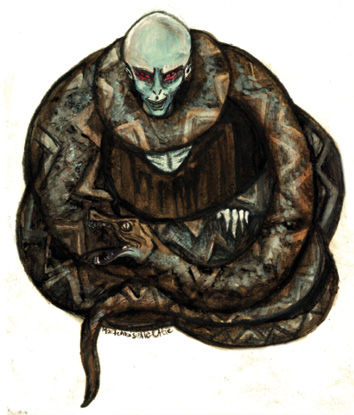
Fig. 4.2 Fan art representing Lord Voldemort and Nagini, from the Harry Potter saga, made with charcoal, acrylics and watercolours. By Mademoiselle Ortie aka Elodie Tihange, CC BY 4.0, https://fr.wikipedia.org/wiki/Fichier:Lord_Voldemort.jpg
Typical characters (or simply, types) represent a particular aspect of humanity or a particular group of humans. For example, characters representing evil in a concentrated and simplified form, like Lord Voldemort (Fig. 4.2), have become quite common in certain kinds of popular fiction. While these ‘villains’ might be individuated to a certain extent, they are not so much individuals as types. Many other typical characters, like the ‘mad professor,’ the ‘femme fatale,’ or the ‘wise old man,’ can be found in modern short stories and novels, where they tend to play secondary or supporting roles as stock characters. When types become ingrained in the psychology and culture of a society and start appearing in many different storyworlds, they are said to be archetypes.
In some respects, every character, no matter how well individuated, can be regarded as a type.4 Even in real life we often perceive other individuals as types (e.g. immigrant, lawyer, Chinese, gay, nerd), a simplification that helps us to classify and group them into meaningful categories. This is the basis of prejudice and negative bias, but it is also an evolved mechanism to cope with complex social information. Similarly, characters in fiction, even those that have been individuated with the utmost craft, cannot avoid being cast as types by readers. Emma Bovary, the eponymous protagonist of Gustave Flaubert’s novel Madame Bovary, is one of the characters of realist fiction that has been characterised with more detail and subtlety (see Fig. 4.3). And yet, she is often perceived as the typical adulterous woman, trying to balance the social imperatives of marriage with her romantic longings.
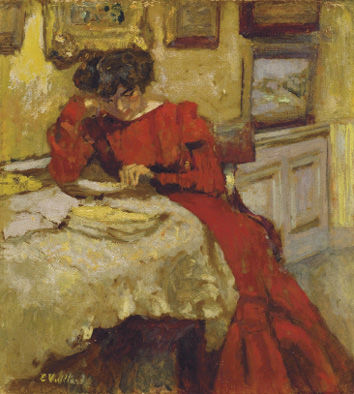
Fig. 4.3 ‘Madame Hessel en robe rouge lisant’ (1905), oil on cardboard. By Édouard Vuillard, Public Domain, https://commons.wikimedia.org/wiki/File:%C3%89douard_Vuillard_-_Madame_Hessel_en_robe_rouge_lisant_(1905).jpg
There are times when fictional characters are somehow able to transcend their individuality and typicality in order to attain some form of universality. Universal characters represent a general aspect of humanity or the whole human species. For example, Don Quixote and Sancho Panza, the protagonists of Cervantes’ novel, have become a pair of universal characters, representing two fundamental and contrasting attitudes towards life that are generally found in human beings: idealism and materialism (Fig. 4.4). Similarly, in her desperate longing for a more fulfilling and authentic life, Emma Bovary may represent the alienation of all individuals in modern society, torn between reveries of plenitude and the unsatisfactory realities of everyday existence.
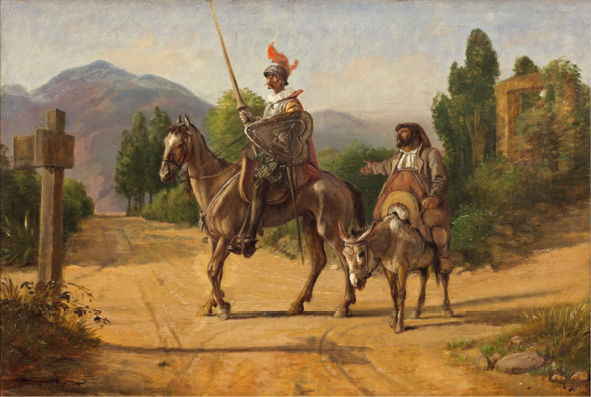
Fig. 4.4 ‘Don Quixote and Sancho Panza at a crossroad,’ oil on canvas. By Wilhelm Marstrand (1810–1873), CC0 1.0, https://commons.wikimedia.org/wiki/File:Wilhelm_Marstrand,_Don_Quixote_og_Sancho_Panza_ved_en_skillevej,_uden_datering_(efter_1847),_0119NMK,_Nivaagaards_Malerisamling.jpg
4.3 Kinds of Character
A certain number of typologies have been proposed to classify and distinguish analytically the kinds of character most often found in fiction. Two of these typologies are still used extensively by critics and writers, even though their psychological assumptions only make them applicable to realist fiction, that is, to storyworlds that attempt to imitate or replicate our own lifeworld.5
The first one of these typologies6 distinguishes characters based on their degree of individuation:
- Flat characters: These characters, which are sometimes equated to what we have called types in the previous section, are constructed around a limited number of traits or characteristics. Of course, there are varying degrees of flatness. At one extreme, we would find characters with a single characteristic or trait, such as a messenger whose only purpose in the story is to deliver a message at a certain point of the plot. Flat characters can be a bit more individuated than that, but their identity, personality, and purpose can often be expressed by a single sentence. They tend to lack depth or complexity and are easily recognisable and remembered by the reader. Because of their limited qualities, however, they also tend to seem quite artificial and most readers have a hard time identifying with them or taking them for real human beings. Minor or secondary characters in fiction tend to be flat, even when the main characters in the same story are not. In genres like comedy or adventure, flat characters are quite common. And some writers, like Charles Dickens or H. G. Wells, seemed quite inclined to populate their novels and short stories with flat secondary characters. An example of a flat character from the Harry Potter series is Argus Filch, the caretaker of Hogwarts, characterised almost exclusively by his love for cats and obsession with catching students who break the rules of the school (Fig. 4.5).
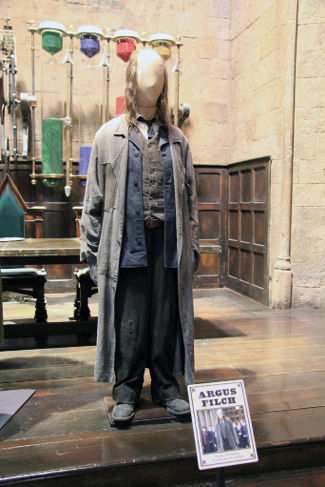
Fig. 4.5 Warner Bros. Studio Tour, London: The Making of Harry Potter. Source: Karen Roe, CC BY 2.0, https://commons.wikimedia.org/wiki/File:The_Making_of_Harry_Potter_29-05-2012_(7358054268).jpg
- Round characters: These characters are endowed with many different traits or characteristics, some of which might even be contradictory and cause them internal or psychological conflicts. With well-crafted characterisation, round characters can appear to be as complex and multifaceted as any human being we might encounter in our world. Major characters in realist prose fiction, such as Emma Bovary, Rodion Raskolnikov, or Anna Karenina, are often round. And there are writers, like Gustave Flaubert or Jane Austen, who tend to characterise even minor characters with such nuance and complexity that they appear to be round, even though they might not have a prominent role in the story. An example of a round character in the Harry Potter novels is Hermione Granger, one of Harry’s closest friends at Hogwarts. While roundness of character is the aim of many realist and popular stories, in modernist and postmodernist fiction the notion of character has often been questioned. In Robert Musil’s novel The Man Without Qualities, for example, the main character is presented as devoid of any of those stable characteristics, individual or typical, which would allow him to fit comfortably into the preconceived patterns of modern bourgeois society (Fig. 4.6).
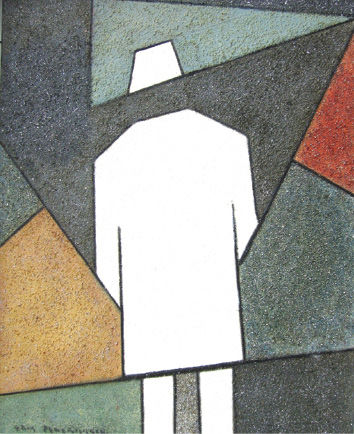
Fig. 4.6 ‘Man without Qualities n°2’ (2005), oil and metal on canvas. By Erik Pevernagie, CC BY-SA 4.0, https://commons.wikimedia.org/wiki/File:Man_without_Qualities_n%C2%B02.jpg
Another typology, also based on a psychological-realist conception of character and often confused with the previous one, distinguishes characters in terms of their ability to change or evolve throughout the plot:
- Static characters: These characters do not experience any profound change or personal evolution from the moment they appear in the plot until they disappear. Most flat characters are also static, although these classifications are based on different variables. It is possible, although relatively unusual, to have a flat character whose limited characteristics undergo a radical transformation in the story. More common is to have round characters that are static, retaining the same personality, identity, or characteristics throughout the whole narrative. In the Harry Potter novels, for example, most major characters, including Harry, Ron, and Hermione, are fairly static, evolving only superficially from their initial appearance until the end of the series, even if the author has tried to add dynamism into their characterisation in order to take account of their growing up into adulthood.
- Dynamic characters: These characters undergo profound and significant changes as the story develops, showing some degree of personal evolution or growth which transforms them into somewhat different characters at the end of the plot. This evolution is not always positive or constructive, and the changes experienced by the character may involve different forms of crisis, physical or psychological degradation, depression, and other negative or destructive changes. Given their complexity and depth, round characters are generally more able to experience this kind of dynamism, although there are many cases where round characters remain static. In short stories, dynamic characters are far less common than in novels, where the length of the narrative provides more opportunities to show character development and evolution. To continue with examples from the Harry Potter novels, Neville Longbottom is one of the few characters who undergoes a significant evolution throughout the series, as he grows up and develops a more confident and bold personality.
4.4 Representing Characters
Like environments, characters in literary narrative need to be represented through words. They cannot be shown directly to the audience, as in film or drama. There are basically two ways to represent characters in prose fiction:7
- Indirect characterisation: The character is presented by the narrator, who describes his or her physical, mental, or behavioural characteristics. Character descriptions are similar to environmental descriptions. They can be long and detailed or short and cursory. And they often rely on significant details that connect characters to the setting, the plot, or even the reader. In certain cases, some details in a character description might be unnecessary or insignificant, but they can serve to make the character seem more realistic. In indirect characterisation, the narrator also tends to use commentary to qualify or evaluate the character, providing a subjective interpretation that goes beyond mere description. Indirect characterisation has the advantage of conveying a lot of information about characters in a short time. But, as a form of ‘telling’ (see Chapter 5), it creates some distance between the reader and the character, making the latter less moving and memorable than when direct methods of characterisation are used.
- Direct characterisation: The character is revealed through his or her actions, words, looks, thoughts, or effects on other characters. Here, the narrator simply records external or internal events related to the character, including words and thoughts, without undertaking a descriptive summary or evaluation of the character’s traits. Direct characterisation is, therefore, a form of ‘showing’ (see Chapter 5). It leaves the reader to interpret the character based on the information provided in the narrative. This kind of characterisation is more vivid and effective than the indirect method. But it also asks more from readers, who are required to participate in the construction of characters through their interpretations.
Both forms of characterisation are often used in short stories and novels. But direct characterisation is generally preferred in modern works of fiction, as it does not require the mediation of an intrusive narrative voice and allows characters to appear more like real people. There are five methods of direct characterisation that are commonly used in narrative: speech, thoughts, effects, actions, and looks. These can be easily remembered with the acronym STEAL.
- Speech: What characters say and how they say it is one of the most important components of direct characterisation. Verbal language is the fundamental semiotic system that we humans employ to communicate meanings, emotions, intentions, and so on. When it involves an interaction with other people, we call this dialogue. In prose fiction, speech is a widely used method of characterisation, as it can be very effective in revealing explicit and implicit information about the characters engaged in dialogue. At the same time, speech can serve to move the plot forward and provide information about events, environments, or other characters in the storyworld.
- Thoughts: Knowing what the characters think (or desire, want, plan, etc.) can also help to define their characteristics. Of course, in our lifeworld, we have no access to what other people think, except when they tell us about it. This is the reason why some modern writers try to avoid this method of characterisation, constraining the narrator to represent what can be observed from the outside, but never entering the characters’ minds. However, in many other works of fiction, both classical and modern, readers are allowed access to the thoughts of at least some of the characters, which are necessarily expressed in words, as some form of interior speech or monologue. Modern writers often use more sophisticated techniques like free indirect speech or interior monologue (stream of consciousness) to try to convey the complex and fluid mental processes of characters.8 Molly Bloom’s interior monologue at the end of James Joyce’s Ulysses is perhaps the most famous example of this technique in modern literature.
- Effects: How other characters are affected or react to a character can be used to characterise, not just those characters (using speech, thought, or action), but also the character that causes the effect. For example, if the characters surrounding John laugh every time he says or does something, readers will tend to assume that John is either funny or ridiculous. This is an effective characterisation technique because it replicates how we judge character in our own life. As social animals, we are always attentive to the impression people make on other people. For instance, we would tend to see as attractive someone at whom others stare with desire or interest, even without knowing what that person looks like.
- Actions: What characters do, their behaviour, is perhaps the most important method of direct characterisation. In general, actions often involve some kind of physical movement (e.g. gesturing, walking, running, etc.), but they can also be passive states (e.g. sleeping, sitting, etc.), or even internal changes reflected in the face or body of the character (e.g. staring, frowning, etc.). Nonverbal communication, which usually accompanies and supports dialogue, is based on actions. Since the characters in fiction are almost always doing something as part of the plot, every action is an opportunity to characterise them in one way or another in the mind of the reader. This is also how we judge each other in life, not only by our words, but also by our deeds.
- Looks: How a character looks or appears in the story can also be a useful method of direct characterisation. Appearance includes the physical traits of the character’s face and body (e.g. eye colour, hair length, height, skin complexion, etc.), but also their way of dressing or presenting themselves in front of others. In our lifeworld, appearance provides important cues about a person’s social status, occupation, mental and physical state, intentions and thoughts, etc. In prose fiction, looks are often employed to provide the same kind of information, typically through some form of description. In some cases, it can be difficult to distinguish between descriptions that use indirect characterisation (presented from the subjective perspective of the narrator) and those that use direct characterisation (without any subjective intervention by the narrator).
4.5 Dialogue
In narrative, the representation of communicative interaction using speech, or dialogue, contributes both to the development of plot and to the characterisation of characters. It can also help to establish the setting, for example through the representation of different dialects or ways of speaking. It is thus a crucial resource used in many short stories and novels, although the importance of dialogue and the techniques employed to convey it vary quite substantially from one narrative to another.
By far the most common method of representing dialogue in prose fiction is direct speech, where the words spoken by the characters appear transcribed and enclosed in quotation marks or other conventional signs. Sometimes, the characters’ words are accompanied with dialogue (or speech) tags that indicate who is speaking and provide other relevant information about the interaction (e.g. ‘“How could I suspect she wanted to kill me?,” said the detective, still shaking his head.’). This method of representing dialogue introduces a dramatic element into the narrative, providing the reader of prose fiction with an experience that approaches that of watching a play or a film.
While many authors attempt to write realistic dialogue that captures the quality and structure of spoken interaction, the truth is that narrative dialogue is subject to many conventions and must be stylised in order to be intelligible for readers. Conversations in real life are full of fragments, repetitions, meaningless sounds, nonverbal cues, gaps, lapses, pauses, etc. But narrative representations of dialogue are often tidied up to provide an idealised and artificial version of conversation, in order to create the impression of reality without wearing down or losing the interest of readers.9
There are other methods to convey dialogue in narrative, although they tend to lack the immediacy and effectiveness of direct speech. In indirect speech, for example, the narrator reports the words of a character without quoting them directly (e.g. ‘The detective claimed that he never suspected his girlfriend wanted to kill him.’). Free indirect speech (or free indirect style) can also serve to report spoken words, although it is more commonly used to convey the character’s thoughts. This method combines the narrator’s third-person narration with the essence of the character’s first-person speech, without using quotation marks (e.g. ‘The detective shook his head when he found out. How could he ever suspect that his girlfriend wanted to kill him?’).
Regardless of the actual method used to represent speech and conversation, there is little doubt that dialogue and, in general, the representation of different voices and perspectives, is a fundamental principle of modern prose fiction. As the literary theorist Mikhail Bakhtin pointed out in his analysis of Dostoevsky’s narratives (Fig. 4.7), many novels tend to be ‘polyphonic,’ that is, they combine, without merging them, ‘a plurality of consciousnesses, with equal rights and each with its own world.’10 The ‘dialogic principle’11 brings together voices from a multiplicity of social and ideological worlds (including the voices of the different characters, the voices of narrators, and even voices external to the story itself) in order to create a narrative that aspires to be as rich and multifarious as life itself.
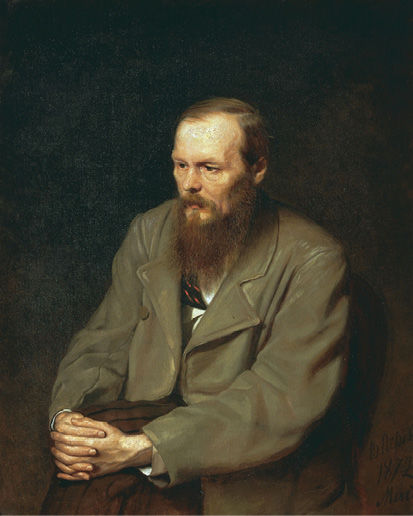
Fig. 4.7 Portrait of Fyodor Dostoevsky by Vasily Petrov (1872). Tretyakov Gallery, Public Domain, https://commons.wikimedia.org/wiki/Фёдор_Михайлович_Достоевский#/media/File:Dostoevsky_1872.jpg
Summary
- At the level of discourse, characters are mere actants with no features other than those defined in the text and no reason for being other than their function in the plot. At the level of story, however, we can regard them as existents of the storyworld.
- In realist prose fiction, characterisation aims to individuate characters by ascribing to them physical, mental, and behavioural characteristics or properties that distinguish them as individuals.
- Most characters can be classified according to their degree of individuation (flat vs. round) or their degree of personal evolution throughout the plot (static vs. dynamic).
- The representation of characters in short stories and novels is generally achieved through indirect or direct methods of characterisation. Direct methods involve the representation of characters’ speech, thoughts, effects (on other characters), actions, or looks.
- In prose fiction, dialogue (the representation of speech interactions between characters) is usually an important element of the story, contributing both to emplotment and characterisation.
References
Abbott, H. Porter, The Cambridge Introduction to Narrative (Cambridge, UK: Cambridge University Press, 2008), https://doi.org/10.1017/cbo9780511816932
Bakhtin, Mikhail M., Problems of Dostoevsky’s Poetics, ed. by Caryl Emerson (Minneapolis, MN: University of Minnesota Press, 1984).
Bakhtin, Mikhail M., The Dialogic Imagination: Four Essays, trans. by Michael Holquist and Caryl Emerson (Austin, TX: University of Texas Press, 2011).
Burroway, Janet, Writing Fiction: A Guide to Narrative Craft (Chicago, IL: University of Chicago Press, 2019), https://doi.org/10.7208/chicago/9780226616728.001.0001
Chatman, Seymour Benjamin, Story and Discourse: Narrative Structure in Fiction and Film (Ithaca, NY: Cornell University Press, 2000).
Cohn, Dorrit, Transparent Minds: Narrative Modes for Presenting Consciousness in Fiction (Princeton, NJ: Princeton University Press, 1988).
Forster, E. M., Aspects of the Novel (San Diego, CA: Harcourt Brace Jovanovich, 1985).
Greimas, Algirdas Julien, and Joseph Courtés, Semiotics and Language: An Analytical Dictionary, trans. by Larry Crist and Daniel Patte (Bloomington, IN: Indiana University Press, 1982).
Margolin, Uri, ‘Character’, in The Cambridge Companion to Narrative, ed. by David Herman (Cambridge, UK: Cambridge University Press, 2007), pp. 66–79, https://doi.org/10.1017/ccol0521856965
Margolin, Uri, ‘Individuals in Narrative Worlds: An Ontological Perspective,’ Poetics Today, 11:4 (1990), 843–71.
Page, Norman, Speech in the English Novel (London, UK: Macmillan, 1988).
1 Uri Margolin, ‘Character,’ in The Cambridge Companion to Narrative, ed. by David Herman (Cambridge, UK: Cambridge University Press, 2007), pp. 66–79, https://doi.org/10.1017/ccol0521856965
2 Algirdas Julien Greimas and Joseph Courtés, Semiotics and Language: An Analytical Dictionary, trans. by Larry Crist and Daniel Patte (Bloomington, IN: Indiana University Press, 1982), pp. 5–8.
3 Uri Margolin, ‘Individuals in Narrative Worlds: An Ontological Perspective,’ Poetics Today, 11:4 (1990), 843–71.
4 H. Porter Abbott, The Cambridge Introduction to Narrative (Cambridge, UK: Cambridge University Press, 2008), pp. 129–31, https://doi.org/10.1017/cbo9780511816932
5 See Seymour Benjamin Chatman, Story and Discourse: Narrative Structure in Fiction and Film (Ithaca, NY: Cornell University Press, 2000).
6 E. M. Forster, Aspects of the Novel (San Diego, CA: Harcourt Brace Jovanovich, 1985).
7 Janet Burroway, Writing Fiction: A Guide to Narrative Craft (Chicago, IL: University of Chicago Press, 2019), https://doi.org/10.7208/chicago/9780226616728.001.0001
8 Dorrit Cohn, Transparent Minds: Narrative Modes for Presenting Consciousness in Fiction (Princeton, NJ: Princeton University Press, 1988).
9 Norman Page, Speech in the English Novel (London, UK: Macmillan, 1988).
10 Mikhail M. Bakhtin, Problems of Dostoevsky’s Poetics, ed. by Caryl Emerson (Minneapolis, MN: University of Minnesota Press, 1984), p. 6.
11 Mikhail M. Bakhtin, The Dialogic Imagination: Four Essays, trans. by Michael Holquist and Caryl Emerson (Austin, TX: University of Texas Press, 2011).

